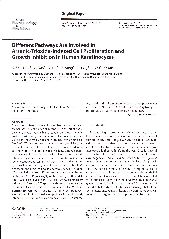摘要
Background: Arsenic is a carcinogen that is associated with an increased risk of human skin cancer. On the other hand, arsenic trioxide (As(2)O(3)) has potential anticancer activity against a wide range of carcinomas. The mechanisms involved in these two opposing processes remain unclear. Methods: We used normal human keratinocytes (NHK), the human keratinocyte HaCaT cell line and human epidermal carcinoma cells (A431 cell line) to investigate potential pathways involved in the effects on cell proliferation and growth inhibition by different concentrations of As(2)O(3). Results: At low concentrations (0.5-32 mu M), As(2)O(3) enhanced keratinocyte proliferation and regulated the expression of about 172 genes. Among them, cell cycling pathway genes (including CDK4 and E2F1) were significantly upregulated. At high concentrations (0.5-10 mu M), As(2)O(3) inhibited cell growth in NHK and HaCaT cells, but not in A431 cells. As(2)O(3) significantly induced NHK and HaCaT apoptosis through the activation of caspase-3, as well as cell cycle arrest at the G2-M phase. Conclusion: Our data suggest that different pathways are involved in As(2)O(3)-mediated proliferation and growth inhibition. In addition, skin carcinoma cells were resistant to As(2)O(3)-induced cell growth inhibition and apoptosis when compared to NHK and HaCaT cells. Therefore, As(2)O(3) may not be appropriate for treatment of skin carcinomas.
- 出版日期2010
- 单位中国人民解放军第二军医大学
